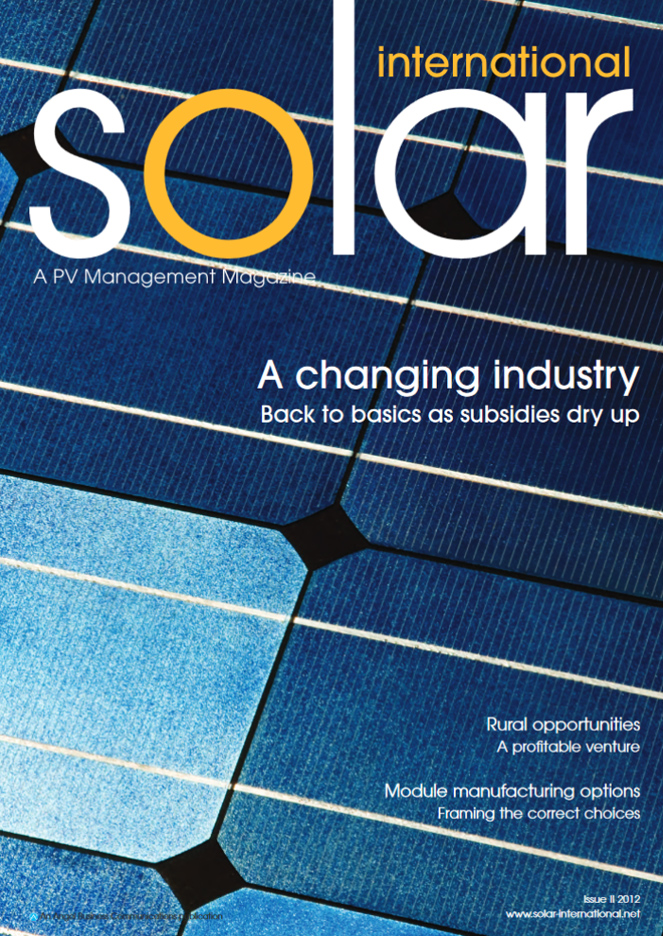
Wolfspeed with Infineon assets: Where next?

What does Cree's acquisition of Infineon's RF Power arm mean for industry? Rebecca Pool talks to Wolfspeed Vice President, Jim Milligan, to find out more.
In early March this year, Cree bought Infineon's RF power business for €345 million. Shares of the lighting manufacturer shifted 9% upwards following the buyout news, and the move will help the company to bolster Wolfspeed's business position.
The acquisition also comes one year after Infineon's $850 million deal to buy Wolfspeed fell apart following US regulatory disapproval. At the time, the proposed acquisition fitted in with chief executive, Reinhard Ploss' desire to grow Infineon's silicon carbide offering and expand into electric vehicle and 5G telecoms market segments. Then Wolfspeed chief executive, Frank Plastina, also asserted that Infineon would extend his company's market reach and accelerate SiC and GaN technology commercialisation.
This time around, roles are reversed. But as Jim Milligan, Vice President of RF and Microwave Products at Wolfspeed puts it: "We see this as an opportunity to strengthen the position Wolfspeed has in the RF GaN market, for the same reasons as a year ago."
This time, the transaction covers Infineon's Morgan Hill, California, facility, including packaging and test operations for silicon LDMOS and GaN-on-SiC, a plastic packaging services line in Melaka, Malaysia, as well as all-important contacts with wireless infrastructure equipment manufacturers.
At the same time, Wolfspeed will scoop up some 260 employees - including more than 70 RF and GaN engineers - from the Morgan Hill facility as well as Chandler, Arizona, and Finland, Sweden, China and South Korea.
Company figures already indicate that the Infineon RF power business will raise Wolfspeed's annual revenues by around $115 million in the first twelve months, post acquisition. And in addition to now being able to provide both bare die and packaged devices, Wolfspeed is vertically integrated from silicon carbide wafers to devices, an advantage that the company describes as 'unique positioning'.
"Infineon's RF power business is an established leader in silicon LDMOS technology and the acquisition also brings access to more customers, additional markets, high volume packaging and test expertise," highlights Milligan. "All of this really strengthens our position going forward particularly in existing 4G and emerging 5G markets."
Indeed, the greater bandwidth and reduced latency that 5G telecoms will deliver, demands more spectrum in ever-higher frequency ranges. And as industry moves from traditional cellular bands, 1.8 GHz to 2.7 GHz, towards 3.5 GHz to 6 GHz bands, Wolfspeed intends to be ready.
"We've been playing on the 4G telecoms market with GaN-on-SiC for a number of years and as we see 5G emerging in higher frequencies, we will really be able to access those opportunities," says Milligan.
What now?
Going forward and as part of the deal, Infineon will support the transaction with a long-term supply of eight inch LDMOS wafers and related components from its Regensburg fab, Germany. The company will also supply advanced packaging and test services from its Melaka and Morgan Hill facilities.
"Wolfspeed can now go to customers and offer state-of-the-art LDMOS but also GaN-on-SiC," points out Milligan. "We are now in the position to provide the optimum technology depending on what the specific needs are."
The company's new employees are sprinkled across ex-Infineon operations, worldwide. And as Milligan points out, gaining some 70 RF and GaN engineers is a massive bonus.
"Infineon has a large entrenched base with its RF engineers that provides specific capabilities, particularly in telecoms wireless infrastructure," he says. "This gives a lot of additional ability to go ahead and address these market very aggressively."
"The requirements associated with existing 4G infrastructure and the migration to 5G infrastructure is so specialised but [these new employees] bring very good device and systems level knowledge," he adds.
So right now, Wolfspeed plans to double its entire capacity this year, and then, quadruple business by 2022. Indeed, post-acquisition announcement, Cree chief executive, Gregg Lowe, told investors he has identified Wolfspeed as a primary growth engine for Cree, given the 'multi-decade growth opportunity offered with the adoption of SiC and GaN technology in electric vehicles, solar energy, industrial, military aerospace and telecommunications'.
And Milligan can't wait. "We have these markets as well as land mobile radio, commercial test equipment applications, homeland defense and radar markets," he says. "We're really excited about this acquisition and the growth it will provide going forward."


































